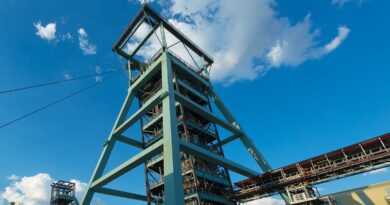New applications for platinum as a catalyst
In the early decades of the nineteenth century scientist Sir Humphry Davy stumbled upon the phenomenon of heterogeneous catalytic oxidation when working on the development of the first-ever miner’s safety lamp. By inserting a platinum wire near the ignited wick of the lamp, Davy found it would catalyse the continued oxidation of coal gas.
This important discovery was the precursor to the use of platinum as an industrial catalyst in a process that has been around for over one hundred years – and which remains vital today; the production of nitric acid.
Nitric acid is a major feedstock for fertiliser and during its manufacturing process, oxidation of ammonia gas with air occurs to form nitric oxide. In order to achieve a high conversion efficiency, this is carried out at pressure over a platinum-rhodium catalyst.
Today, new applications for platinum catalysts continue to be found. Tanaka, the leading Japanese precious metals business, has recently won a Technology Award from the Catalyst Manufacturers Association, Japan, in recognition of its involvement in the development of a ‘hydrophobic’ platinum-based catalyst that prevents moisture build-up and enables a catalytic reaction to be maintained, even at ambient temperatures.
The Tanaka catalyst, developed in collaboration with Japan’s National Institutes for Quantum and Radiological Science and Technology, can be used for controlled oxidation reactions of hydrogen and combustible gases, in nuclear fusion facilities and elsewhere, without the need for heaters and other equipment. It also enables reactions in outdoor environments without access to an electric power source or in disaster-affected areas during power failures. Because of the hydrophobic properties of this catalyst, it has potential applications in safety equipment to prevent explosions and other accidents.
In Australia, researchers at Swinburne University, in collaboration with Shaanxi Normal University, China, have developed a robust single-atom platinum catalyst that can produce high-performance, solar light-triggered hydrogen from seawater. This has led to the development of a prototype device that is able to float on the ocean surface, enabling hydrogen production from seawater.
In conventional photocatalysts, electrons and holes (the absence of electrons) are separated under solar radiation to trigger water splitting to hydrogen and oxygen. The separated electrons and holes tend to recombine, which significantly decreases the photocatalytic activity and reduces the hydrogen production efficiency. The newly-discovered single-atom platinum catalyst effectively extracts the photo-generated electrons, thus avoiding unwanted recombination.
PLATINUM IN AUTOCATALYSTS
Platinum catalysts remain as relevant as ever, with demand from the automotive sector the single largest demand segment for platinum, accounting for around 40 per cent of annual platinum demand. The main automotive use of platinum is in autocatalysts or ‘catalytic converters’ for, primarily diesel, vehicles – devices that reduce harmful emissions from internal combustion engine vehicles.
However, platinum is also an effective catalyst in gasoline vehicles, where it can be a substitute for its sister metal, palladium, at a one-to-one ratio. While the last two decades have seen the predominant use of palladium in autocatalysts for gasoline vehicles, this trend is being reversed due to the significant price differential between platinum and the far more costly palladium. Interestingly, a similar, price-driven reversal occurred from 2000 to 2003 that resulted in over 1 moz of platinum per annum replacing palladium in autocatalysts.
Today, platinum’s growing share of the autocatalyst market, as it substitutes for palladium in gasoline engine vehicles, is expected to result in significant additional annual demand in the next few years.




